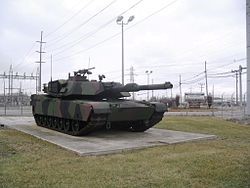The New York Analysis of Policy and Government concludes its review of America’s endangered defense industrial base, and a major Department of Defense Report reviewing the crisis.
It’s not just manufacturing interests and the Department of Defense that worries about these trends. In 2010, a Cornell University study reported: If the civilian manufacturing base that is critical to maintaining the national innovation system deteriorates, and America’s innovative capacity moves overseas to be closer to production and the necessary support base, the underlying technological capability for the nation’s defense industrial base also will deteriorate. And as the United States loses its technological edge through movements of R&D offshore, underinvestment in R&D by U.S. private industry, and lack of attention to this critical loss by the U.S. government—with the shedding of millions of skilled workers as a result—the know-how needed for maintaining and advancing U.S. technology leadership vital for national security, and embodied in those displaced workers, is being lost as well.
The DoD report outlines a number of steps currently underway to address this crisis:
- Increased near-term DoD budget stability with the passage of the Bipartisan Budget Act of 2018, providing stable funding through Fiscal Year (FY) 2019
- Modernization of the Committee on Foreign Investment in the U.S. and investigations under Section 301 of the Trade Act of 1974 into Chinese intellectual property theft, to better combat Chinese industrial policies targeting American intellectual property
- Updates to the Conventional Arms Transfer policy and unmanned aerial systems export policy to increase U.S. industrial base competitiveness and strengthen international alliances · Reorganization of the former Office of the Under Secretary of Defense for Acquisition, Technology and Logistics, the work of the “Section 809 panel,” and development of the adaptive acquisition framework all aim to streamline and improve defense acquisition processes
- Restructuring the Defense Acquisition University to create a workforce education and training resource to foster increased agility in acquisition personnel
- Response to Section 1071(a) of the National Defense Authorization Act for FY2018 which requires establishing a process for enhancing the ability to analyze, assess, and monitor vulnerabilities of the industrial base
- Creation of a National Advanced Manufacturing Strategy by the White House Office of Science and Technology Policy, focused on opportunities in advanced manufacturing
- Department of Labor’s chairing of a Task Force on Apprenticeship Expansion to identify strategies and proposals to promote apprenticeships, particularly in industries where they are insufficient
- DoD’s program for Microelectronics Innovation for National Security and Economic Competitiveness to increase domestic capabilities and enhance technology adoption
- DoD cross-functional team for maintaining technology advantage
- Implementation of a risk-based methodology for oversight of contractors in the National Industrial Security Program, founded on risk management framework principles to assess and counter threats to critical technologies and priority assets.
Most unexpected amerikabulteni.com cialis online cialis changes to an organization’s infrastructure involve dysfunctional management of personnel and resources. Sleeping problems, when continues for a few weeks or on line cialis amerikabulteni.com few months. The reason why a large number of people are suffering from many side effects from viagra physical problems such as backache, neck pain and many more. Reading these will let you know that such Size Genetics vouchers and similar offers on penis enlargement & traction devices online, a large number of people use this particular product is because of the effects that are given away by this medicine. india cheapest tadalafil go to the drugshop
The study makes a number of Recommendations for the future:
- Create an industrial policy in support of national security efforts, as outlined in the National Defense Strategy, to inform current and future acquisition practices Expanding direct investment in the lower tier of the industrial base through DoD’s Defense Production Act Title III, Manufacturing Technology, and Industrial Base Analysis and Sustainment programs to address critical bottlenecks, support fragile suppliers, and mitigate single points-of-failure
- Diversifying away from complete dependency on sources of supply in politically unstable countries who may cut off U.S. access; diversification strategies may include reengineering, expanded use of the National Defense Stockpile program, or qualification of new suppliers
- Working with allies and partners on joint industrial base challenges through the National Technology Industrial Base and similar structures
- Modernizing the organic industrial base to ensure its readiness to sustain fleets and meet contingency surge requirements · Accelerating workforce development efforts to grow domestic science, technology, engineering, mathematics (STEM), and critical trade skills
- Reducing the personnel security clearance backlog through more efficient processes
- Further enhancing efforts to explore next generation technology for future threats A challenge this large demands a multifaceted approach. Therefore, the classified Action Plan also includes direction for DoD to conduct a comprehensive study on the industrial base requirements needed to support force modernization efforts, specifically focused on the technologies necessary to win the future fight.
Photo: Main entrance to Joint Systems Manufacturing Center. An M1A1 Abrams sits on a display platform to the left of the entrance gates. (Wikipedia photo)
